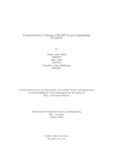| dc.contributor.advisor | Hossain, Muhammad Iqbal | |
| dc.contributor.author | Tahiti, Tasnia Jasim | |
| dc.contributor.author | Yusuf, Talha | |
| dc.contributor.author | Shakhawat, Chowdhury Abrar | |
| dc.date.accessioned | 2022-06-01T08:19:34Z | |
| dc.date.available | 2022-06-01T08:19:34Z | |
| dc.date.copyright | 2022 | |
| dc.date.issued | 2022-01 | |
| dc.identifier.other | ID 18101482 | |
| dc.identifier.other | ID 18101170 | |
| dc.identifier.other | ID 18101497 | |
| dc.identifier.uri | http://hdl.handle.net/10361/16798 | |
| dc.description | This thesis is submitted in partial fulfillment of the requirements for the degree of Bachelor of Science in Computer Science and Engineering, 2022. | en_US |
| dc.description | Cataloged from PDF version of thesis. | |
| dc.description | Includes bibliographical references (pages 27-29). | |
| dc.description.abstract | Crime scene photography is one of the most essential parts of documentation for all
physical crime scenes in the field of forensic science. It is an organized and structured
operation, having a goal of helping the investigators with the hidden information
about the place of crime and finally recognizing the criminal. Photography and
videography of the crime scene is a key procedure as this will further help to analyze
and find viable indications about the crime. This obtained footages lead to the
idea of creating a 3D model of the crime site. By using sophisticated methods in
computer vision, the output obtained can be realistic reconstructions. The article
further goes over a few essential designs such as crucial elements that should be
included during a sophisticated Crime Scene Investigation (CSI) study. Our proposal
here is to generate a realistic formation of the crime site with the multiple
sophisticated designs. This also concerns the estimation of image properties such
as pixel orientation, frequency, noise level etc. Moreover, we present a set of 3D
pictures that have been generated and compared to state-of-the-art view synthesis
methods. Furthermore, we demonstrate why using RPCA provides us with the best
outcome possible. | en_US |
| dc.description.statementofresponsibility | Tasnia Jasim Tahiti | |
| dc.description.statementofresponsibility | Talha Yusuf | |
| dc.description.statementofresponsibility | Chowdhury Abrar Shakhawat | |
| dc.format.extent | 29 pages | |
| dc.language.iso | en | en_US |
| dc.publisher | Brac University | en_US |
| dc.rights | Brac University theses are protected by copyright. They may be viewed from this source for any purpose, but reproduction or distribution in any format is prohibited without written permission. | |
| dc.subject | Image processing | en_US |
| dc.subject | Crime scene | en_US |
| dc.subject | 3D printing | en_US |
| dc.subject | Inpainting | en_US |
| dc.subject | PCA | en_US |
| dc.subject.lcsh | Image processing -- Digital techniques. | |
| dc.subject.lcsh | Machine learning | |
| dc.title | Reconstruction of images with RPCA and augmenting 3D model | en_US |
| dc.type | Thesis | en_US |
| dc.contributor.department | Department of Computer Science and Engineering, Brac University | |
| dc.description.degree | B. Computer Science | |

